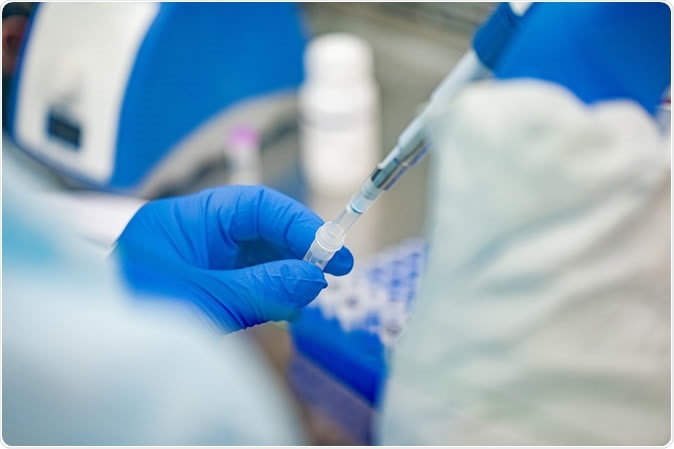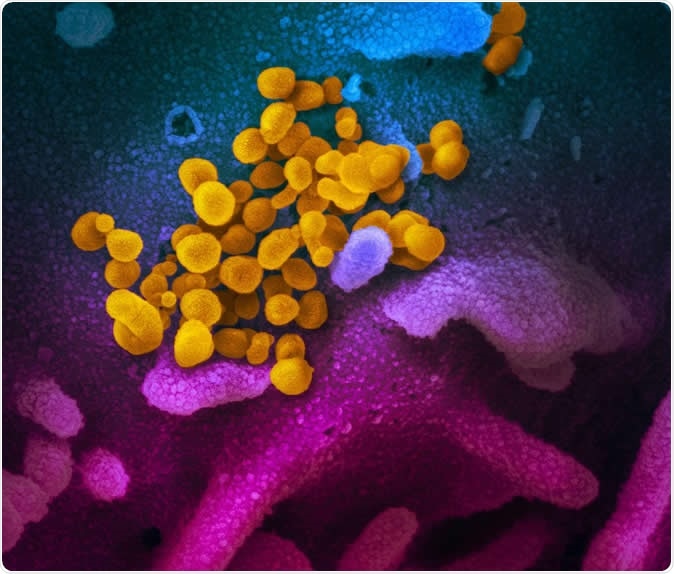The Severe Acute Respiratory Syndrome Corona Virus (SARS-CoV-2) that causes COVID-19 disease has affected 932,605 individuals and has taken 46,809 lives worldwide. Now, researchers have published a review on the likelihood of survival after SARS-CoV-2 infection. The study titled, “Likelihood of survival of coronavirus disease 2019” is published in the latest issue of The Lancet Infectious Diseases.
Several factors determine the virulence of infection, one of which is the fatality ratio. COVID-19 has been declared a pandemic and has killed tens of thousands around the world to date. To assess the case-fatality ratio, a proportion of persons diagnosed with the infection who die from the disease is calculated. The case-fatality ratio determines the likelihood of survival if infected with the virus and also shows the ultimate burden to the healthcare system and public health it poses.
In 2003 SARS had a case fatality ratio of 14 to 15 percent, and the Middle East Respiratory Syndrome (MERS) that occurred in 2012 was estimated to be 35 percent, according to the World Health Organization (WHO). The novel coronavirus SARS-CoV-2, first reported in December 2019 in Wuhan, China, is of the same family of viruses. The researchers wrote that it is crucial to determine the case fatality ratio of the infection so that the response of governments and health authorities is measured, and prepared to deal with the pandemic.

Pennsylvania Commonwealth microbiologist Kerry Pollard performs a manual extraction of the coronavirus inside the extraction lab at the Pennsylvania Department of Health Bureau of Laboratories on Friday, March 6, 2020. Image Credit: Governor Tom Wolf / Flickr
Various studies
However, at present different studies are presenting varying estimates of the case fatality ratio of COVID-19.
A study from China that included 1,100 patients showed the case fatality ratio of the infection to be 1.4 percent.
Chinese Center for Disease Control and Prevention (CDC) later determined from a set of 44,672 confirmed cases in China that the case fatality ratio was 2.3 percent. The Chinese CDC said that different regions and rates of transmission showed different case fatality ratios.
- Case-fatality ratio was 2.9 percent in Hubei province (where the virus was first detected)
- The case-fatality ratio was 0.4 percent in other parts of China.
The case-fatality ratio seemed to change with time as well, other studies have shown. Before 31st December, the case fatality ratio was 14.4 percent, and between 1st and 10th January 2020, the ratio was 15.6 percent in China. The ratios were 5.7 percent, 1.9 percent, and 0.8 percent for 11th to 20th January, 21st to 31st January, and after 1st February, respectively. Case-fatality also varied between sexes with males having a fatality ratio of 2.8 percent and women 1.7 percent, says the Chinese CDC.
Age was a determinant factor in the case-fatality ratio with a range of 0.2 percent to 14.8 percent in those aged 11 to 19 years and over 80 years, respectively. Fatality ratios rose with comorbid conditions.
- 10.5 percent in those with cardiovascular disease
- 7.3 percent in those with diabetes
- 6 percent in those with hypertension
- 6.3 percent in those with chronic lung disease and
- 5.6 percent in those with cancer
Another study from the WHO–China Joint Mission on COVID-19 found that the overall case-fatality ratio was 3.8 percent when they looked at 55,924 cases in China.

This scanning electron microscope image shows SARS-CoV-2 (yellow)—also known as 2019-nCoV, the virus that causes COVID-19—isolated from a patient in the U.S., emerging from the surface of cells (blue/pink) cultured in the lab. NIAID-RML
What was found?
Robert Verity and colleagues explained that a crude case-fatality ratio calculated by dividing the number of deaths due to COVID-19 by the total number of cases is an inaccurate predictor of the problem. They explained that it might be two to three weeks before a case is detected and reported, and further only severe symptomatic cases are only detected.
They noted from 3,665 cases from mainland China and 1,334 cases outside mainland China and found that the average time between detection of a case and death is 17.8 days. The average time between the onset of symptoms and discharge from the hospital is also 24.7 days. Using this, the case-fatality ratio for China is 1.38 percent.
They compared the overall case fatality rates between SARS, Influenza, and COVID-19.
Results showed
- Overall case fatality ratio was 14-15 percent, 0.0024 percent, and 1.38 percent respectively for SARS, Influenza, and COVID-19.
- Based on age the case fatality ratio for COVID-19 was:
- 10-14 years - 0.0148 percent
- 20-24 years - 0.06 percent
- 30-34 years - 0.146 percent
- 40-44 years - 0.3 percent
- 50-54 years - 1.3 percent
- 60-64 years – 4 percent
- 70-74 years – 8.6 percent
- over 80 years – 13.4 percent
They noted that different countries have different prevention strategies as well as control and mitigation strategies. Thus their case-fatality ratios may also vary.
They wrote in conclusion, “Even though the fatality rate is low for younger people, it is very clear that any suggestion of COVID-19 being just like influenza is false: even for those aged 20–29 years, once infected with SARS-CoV-2, the mortality rate is 33 times higher than that from seasonal influenza.”
They wrote that China might be out of danger at present, but several nations are facing the public health burden caused by the pandemic and strategies for “early detection, early diagnosis, early isolation, and early treatment” could help reduce the case fatality ratio as well as control the outbreak of the infection.
Journal reference:
Likelihood of survival of coronavirus disease 2019 Ruan, Shigui The Lancet Infectious Diseases, https://www.thelancet.com/journals/laninf/article/PIIS1473-3099(20)30257-7/fulltext